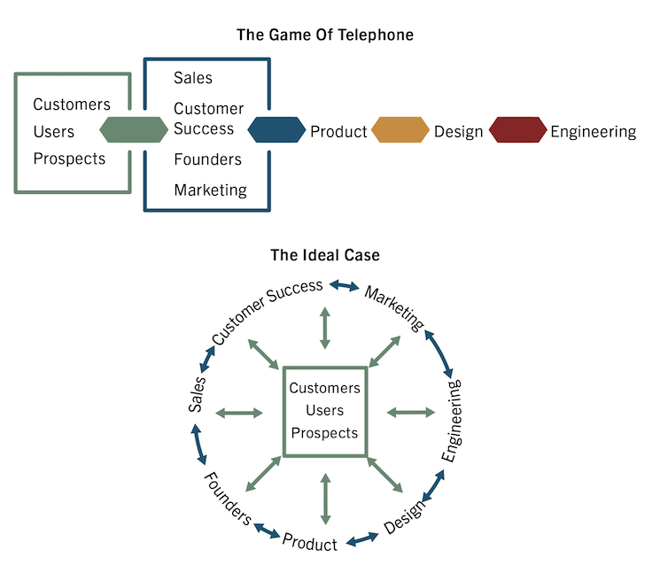You may have seen our recent client interview about the transition to being product-driven instead of sales-driven. Specifically, it was focused on Trait #1 of the 5 Traits of a Product-Driven Company: Product and UX are closest to the customer. I wanted to continue sharing client stories to articulate the value they have seen from a focus on customer research.
Product-Driven Trait #1: Product and UX are closest to the customer
We interviewed one of our clients George Mitsopoulos, Chief Product Officer at Broadvoice. We asked George how leaning in closer to their customer transformed the way they do business.
Thoughts from George
Read on to discover if your team is facing similar struggles and what could be on the other side of a product-driven approach:
1. What caused you to realize that the product team needed to talk more directly with customers?
George: Our go-to-market strategy revolves almost exclusively around selling through an indirect channel of partners and company culture is very sales-driven. When determining what to build to help drive sales as an organization we would often turn to our partners and ask, “What would help you sell more?” As the partners sell both our service and our competitors’ service, we would often hear requests around feature parity or something that a competitor had that we were missing.
Despite delivering the requested features from sales, we found the increase in sales or adoption didn’t follow. We were making significant investments and seeing lackluster results.
2. When you started to have product talk directly to customers, what impact did you start to see?
George:
The end result of talking directly with customers was a successful product launch with a 54X increase in product utilization in our first month.
For context on the changes we made - we had just kicked off a project around the next generation of our team collaboration offering and were looking to approach it in a customer-centric way. We started by performing in depth research from both our existing customers, prospective customers as well as market and competitive research. We focused on our target customer profile based on business size, what tools they were using to collaborate with customers today and how we could improve the experience. The initial research resulted in requirements that took the product vision and brought it to life emphasizing what mattered most to our customers. As we began developing, we consistently checked in with our customers showing them interactive walkthroughs along the way. At that point we brought in our partners to gather their feedback and gain buy-in through the development process. Before going GA we did an alpha launch with our internal stakeholders and then a beta launch with customers and partners to gather feedback and iterated based on that feedback through the process.
By the way, in addition to our increase in product utilization, our sales team also had a record breaking sales month!
3. How do you plan to continue having the product team engage with customers on an ongoing basis?
George: Though the shift from sales-driven to product-driven doesn’t happen overnight, we have started making customer research and feedback a norm throughout the product development lifecycle. We still talk to partners and take their requests but have incorporated a series of customer and market research following those requests to help ensure we are making the right bets.
Closing Thoughts: The importance of direct customer conversations
Putting product and UX closest to the customer allows the teams responsible for defining and building the product to truly understand their needs in order to deliver value. When product and UX solely relies on learning about the customer from sales or other stakeholders, the end result is a game of telephone as illustrated below. We all recall what happens as a kid when we played the game of telephone - the last person never hears the message as it was originally intended. The impact of the game of telephone when it comes to building products is that we are likely building the wrong product, and won't be delivering impactful or scalable results to our customers or the business.

The ideal case is that product and UX still talks directly with sales and their internal stakeholders, as that is a piece of understanding the sentiment from customers. However, it is important to remember that sales is inherently solution-based. In order to be successful, product needs to be problem or outcome based. Therefore, instead of relying soley on indirect input from sales - product must put more weight on the direct conversations with customers as a way to truly understand their needs and desires in order build what matters to them.
Special thanks to George for taking the time to share his learnings and the impact Broadvoice saw from their focus on being close to their customers.
Are you looking to drive the shift in your organization to be more product-driven? Check out Prodify’s Guide to Becoming Product-Driven or contact us to discuss how we can help.
-1.png)
